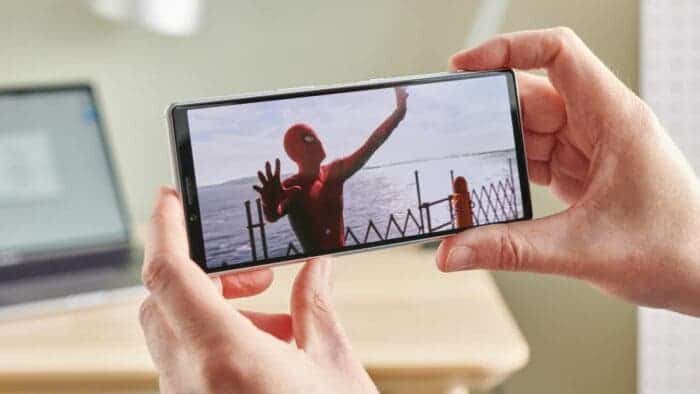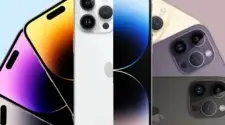Every year, a long list of smartphones is released and most of these devices focus on different aspects. While some are all-round flagships, many have a special focus. Some smartphones focus on battery performance while others focus on display. However, we acknowledge that there are some users that buy their smartphones for the selfie camera. This is why we have this dedicated column of the top 10 smartphones for selfies in the market. This column comes once in two months because there are not many new selfie-oriented smartphones monthly. The interesting aspect of the smartphones for selfies column for October is that it contains many new devices that have not appeared in any previous column. It also contains smartphones from eight different manufacturers, the highest that we have since the inception of this selfie column.
Over the past four columns, we have had some decent flagship and even mid-range smartphones. We have devices from Huawei, Xiaomi, Apple, Samsung, Vivo, Oppo, OnePlus, and so on. Smartphones like the Huawei P50 / P40 series, iPhone 12 series, Xiaomi Mi 11 series, Pixel 5 series, and so on have made an appearance on previous columns.
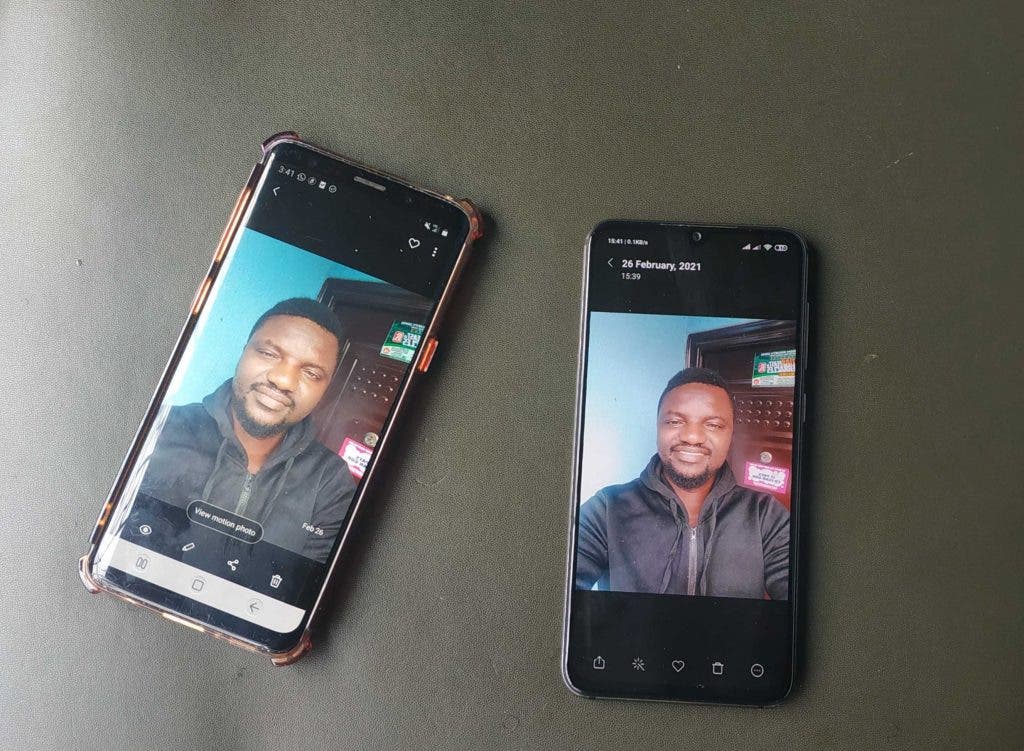
As usual, our top 10 smartphones for selfies is a pretty long piece because we do not just look at the selfie quality and specs of the smartphones, we also give the summary of the device. Thus, for those who may not be interested in the details, here is a list of the top 10 smartphones and their camera details for October 2021.
- Sony Xperia Pro-I: 8 MP, f/2.0, 24mm (wide), 1/4″, 1.12µm: HDR; 1080p@30fps, 5-axis gyro-EIS
- iPhone 13 Pro Max: 12 MP, f/2.2, 23mm (wide), 1/3.6″; SL 3D, (depth/biometrics sensor); HDR; 4K@24/25/30/60fps, 1080p@30/60/120fps, gyro-EIS
- iPhone 13 Pro: 12 MP, f/2.2, 23mm (wide), 1/3.6″; SL 3D, (depth/biometrics sensor); HDR; 4K@24/25/30/60fps, 1080p@30/60/120fps, gyro-EIS
- Xiaomi Civi: 32 MP, (wide), AF; HDR, panorama; 1080p@30fps
- Google Pixel 6: 11.1 MP, f/2.2, 20mm (ultrawide), 1.22µm; Auto-HDR, panorama; 4K@30fps, 1080p@30/60fps
- Google Pixel 6 Pro: 11.1 MP, f/2.2, 20mm (ultrawide), 1.22µm; Auto-HDR, panorama; 4K@30fps, 1080p@30/60fps
- Honor 50: 32 MP, f/2.2, 22mm (wide), 1/3.14″; 1080p@30fps
- Lenovo Legion 2 Pro: Motorized pop-up 44 MP, f/2.0, 24mm (wide), 1/2.65″, 1.0µm, AF; HDR; 4K@30/60fps, 1080p@30/60/120fps
- TCL 20 Pro 5G: 32 MP, f/2.5, (wide), 0.8µm; HDR; 4K@30fps, 1080p@30/60fps, HDR
- Huawei P50 Pro: 13 MP 1/2.8″; 1.22µm; 18 mm-equivalent lens; PDAF, EIS; 4K video, 2160p/60 fps, (2160p/30 fps tested)
It is common for readers to get “angry” when they don’t find their favorite device on the list. Well, your favourite device is not on this list probably because it has appeared in a previous column. You may check out our February 2021 edition, April 2021 edition, and June 2021 edition, and August 2021 edition for more top smartphones for selfies.
How do you choose your smartphones? Is the selfie camera one of the major considerations? If yes, then this list may help you make a decision. Unfortunately, some latest flagship smartphones like the Xiaomi Mi MIX 4 and Samsung Galaxy Z Fold3 can not make this list for obvious reasons. These smartphones come with an under-display camera. The imaging capabilities of the under-display camera are quite poor for now. Lovers of full-screen devices will love these smartphones and not selfie lovers.
It is important to note that high pixel does not always mean “good camera”. Pixel size is just one aspect and we also have camera optimization, software optimization, AI, portrait mode, and other details that make the camera output better.
Top 10 smartphones for selfies – Disclaimer (emphasis)
The devices in the list are, in our opinion, great smartphones for selfies. Since we don’t get to see great smartphones for selfies regularly, some devices from our previous column may make an appearance on this column. Also, some pretty good smartphones for selfies may not be on this list because they have been included in our previous column(s). If you are a selfie freak or you buy your smartphones for their selfie ability, then check out our list with good recommendations.
1. Sony Xperia Pro-I
A few days ago, Sony officially released its latest flagship smartphone, Xperia Pro-I. This smartphone is tagged the “new video camera king” as it comes with an Exmor RS sensor and other features. Of course, we know that Sony is on top of its game when it comes to camera sensors. In fact, its solutions are one of the best globally. Many top manufacturers rely on Sony for their camera sensors. For this reason, Sony’s smartphone camera solution is usually top class.
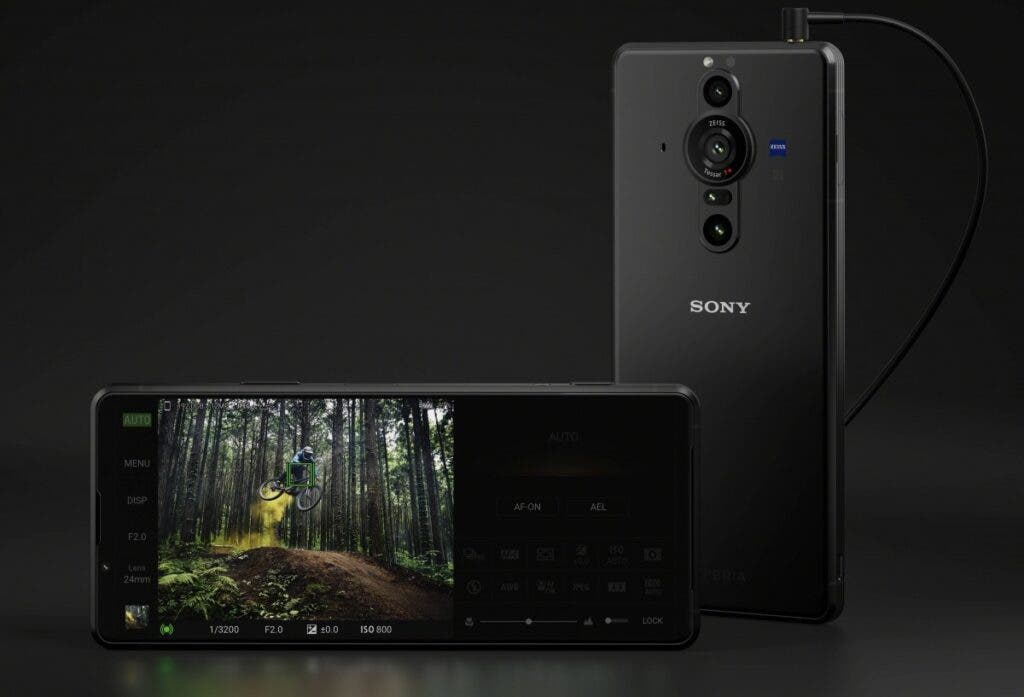
The Sony Xperia Pro-I is called the “new video camera king” for its rear camera and other accessories. However, this does not mean that its front camera does not have any attractive features. In fact, its front camera optimization is as good as the rear. The Sony Xperia Pro-I comes with an 8MP with an f/2.0 aperture. At first glance, it appears as though the 8MP camera is small, however, this sensor has a large f/2.0 24mm (wide) aperture where each pixel captures more details, more dynamic range, and greater depth of field. This larger lens stabilizes the overall image effect.
According to Sony, it does not have to chase higher pixels like other smartphone manufacturers. This 8MP sensor also supports autofocus. Furthermore, the Japanese manufacturer uses the HDR (High Dynamic Range) photo to optimize the overall shooting ability of this sensor. This feature also improves the image quality in low-light environments. In addition, the company uses Artificial Intelligence to further improve the quality of the image output.
Although this sensor does not come with EIS (electronic image stabilization), it comes with SteadyShot™ with Intelligent Active Mode (5-axis stabilization). This gives the image output a stable effect and reduces the noise. Portrait selfie is not a feature that we find in the front camera of many smartphones. However, the Xperia Pro-I comes with Portrait selfie. This means that users can blur the background of their selfies.
This flagship smartphone also comes with a display flash as well as a hand gesture with a 78° field of view. Generally, the Sony Xperia Pro-I front camera has very good exposure in both photos and videos.
Key front camera specifications:
- 8 MP, f/2.0, 24mm (wide), 1/4″, 1.12µm
- HDR
- 1080p@30fps, 5-axis gyro-EIS
Sony Xperia Pro-I succinct specifications
This smartphone comes with a 6.5-inch OLED display that supports a resolution of 1644 x 3840 pixels (~643 PPI density). Under the hood, we have a Snapdragon 888 5nm chip that supports 5G. In addition to the processor, this flagship smartphone also has up to 12GB of RAM and 512GB of internal storage. On the rear, it uses a quad camera setup. It has a 12MP main camera that supports 315 PDAF, OIS as well as 90% frame coverage. It also comes with a 12MP telephoto camera that supports 2x optical zoom and OIS. In addition, this smartphone uses a 12MP ultrawide camera as well as a 0.3MP 3D TOF sensor. To keep its lights on, this device uses a 4500 mAh battery that supports 30W fast charging which delivers 50% in 30 minutes.
2. iPhone 13 Pro Max
The recently released iPhone 13 Pro Max comes with a decent camera like most flagship iPhones. However, this smartphone is by no means the most decent selfie camera smartphone in the industry. This is why DxOMark scores this smartphone 99 points and it is behind no less than eight Android smartphones. Nevertheless, the iPhone 13 Pro Max comes with everything that a selfie lover will need. On paper, the iPhone 13 Pro Max selfie camera might not sound that special. After all, it comes with a 12MP f/2.2 sensor. However, the optimizations and quality are top-notch.
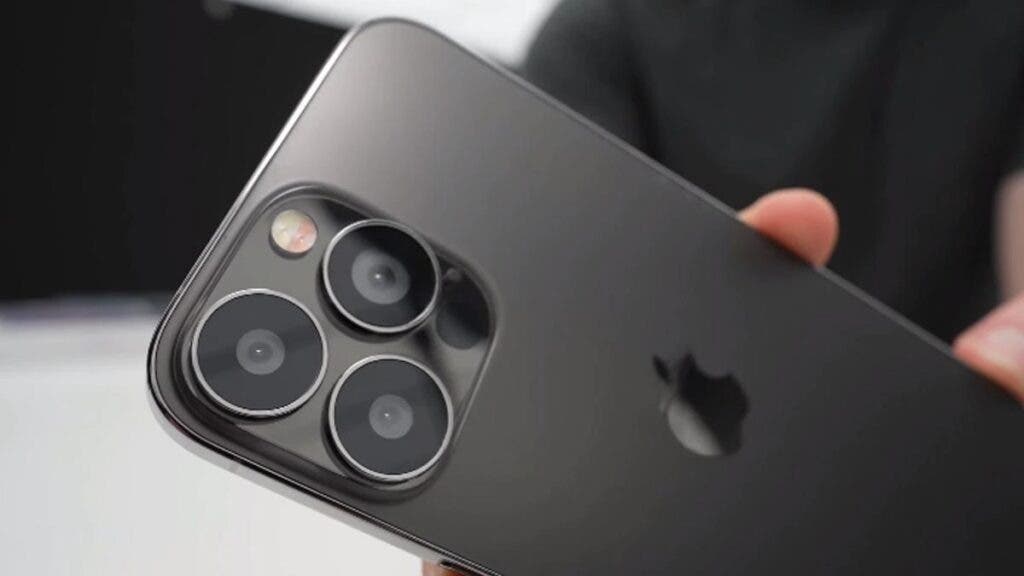
Key front camera specifications:
- Dual front camera
- 12 MP 1/3.6-inch sensor with 23 mm-equivalent f/2.2-aperture lens
- SL 3D sensor for depth estimation
- 4K 2160p Dolby Vision HDR video at 24/30/60 fps, 1080p at up to 120 fps, gyro-EIS
This device is great for quality portrait images with a depth sensor. The night mode feature is fairly good and a low-light environment is surely not a problem. Its autofocus feature ensures that faces are super clear but its performance is optimized for a 30cm to 90 cm range. However, above 90 cm, say at 120 cm, the depth of field sensor ensures that the selfies remain sharp. Looking at the bokeh, stabilization modes, and other features, the iPhone 13 Pro Max obviously stands out as one of the top-notch smartphones for selfies in the industry presently.
Key front camera specifications:
- 12 MP 1/3.6″ sensor, 23 mm equivalent f/2.2-aperture lens
- 3D sensor
- Cinematic mode for recording videos with shallow depth of field (1080p at 30 fps)
- HDR video recording with Dolby Vision up to 4K at 60 fps; 4K video recording at 24/ 25/ 30/ 60 fps; 1080p HD video recording at 25 fps, 30 fps, or 60 fps
iPhone 13 Pro Max succinct spec preview
The iPhone 13 Pro Max comes with a 6.7 inch Super Retina XDR OLED that supports 1284 x 2778 pixel resolution and a 120Hz refresh rate. This is the first iPhone that comes with a screen refresh rate above 60Hz. Under the hood, this smartphone uses the Apple A15 Bionic 5nm chip. This device uses 6GB of RAM and 128GB/256GB/512GB/1TB of internal storage. On the rear, it has a triple camera setup, all 12MP sensors. It includes a wide-angle, telephoto, an ultrawide angle, and a TOF 3D LiDAR sensor. The battery size is only 4352 mAh and it supports 25W fast charging, 15W MagSafe wireless charging, and 7.5W Qi magnetic fast wireless charging. On the software end, this device comes with iOS 15 out-of-the-box.
3. iPhone 13 Pro
The iPhone 13 Pro Max and iPhone 13 Pro basically use the same selfie camera thus there is not much difference between the two. The key specifications of both smartphones are the same. However, if you need a decent selfie smartphone, the iPhone 13 Pro is a great choice. The iPhone 13 Pro front camera is quite accurate with its target exposure on the face and the depth of view is also very wide. This gives the selfie camera the ability to capture more persons in an image. Furthermore, the indoor and outdoor exposures of the images are quite good and the depth estimation is also very accurate.
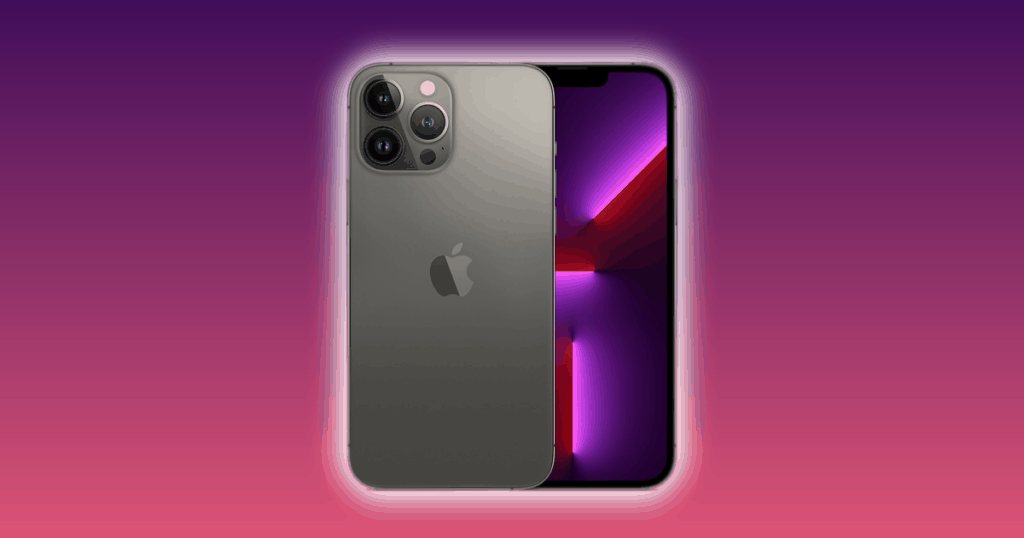
For its videos, the wide dynamic range and accurate target exposure are also very desirable. This makes the front camera more attractive for videos. The white balance is also cool and the wide focus range means all subjects are in focus in group video selfies.
However, this smartphone front camera also comes with some cons. Of course, we should expect this considering that it ranks 11th on the DxOMark ranking. First off, the output image is not entirely noise-free, and occasionally, especially in a low light indoor environment, you will experience inaccurate skin tones. Furthermore, sometimes, there is slight distortion on the face and when using a flash, the subject exposure can be low sometimes. In low light environments, the noise level is very high and in motion and low light videos, there is a loss of details.
Key front camera specifications:
- 12 MP 1/3.6″ sensor, 23 mm equivalent f/2.2-aperture lens
- 3D sensor
- Cinematic mode for recording videos with shallow depth of field (1080p at 30 fps)
- HDR video recording with Dolby Vision up to 4K at 60 fps; 4K video recording at 24/ 25/ 30/ 60 fps; 1080p HD video recording at 25 fps, 30 fps, or 60 fps
iPhone 13 Pro succinct spec preview
This smartphone comes with a 6.1 inch Super Retina XDR OLED that supports 1170 x 2532 pixels resolution. It also comes with the Apple A15 Bionic SoC and supports 6GB of RAM and 128GB/256GB/512GB/1TB of internal storage. This smartphone uses a quad-rear camera setup. It has a 12MP main camera with 12MP (ultrawide), 12MP (telephoto), and a ToF 3D LiDAR scanner. To keep its lights on, this device uses a 3095 mAh battery that supports 20W fast charging. This device also supports 15W MagSafe wireless charging, and 7.5W Qi magnetic fast wireless charging. On the software end, this device comes with iOS 15 out-of-the-box.
4. Xiaomi Civi
The Xiaomi Civi is a decent smartphone and its selfie camera is by no means its selling point. This smartphone focuses on its design and Xiaomi claims that it is the most beautiful smartphone that it has ever made. However, this smartphone also comes with a decent front camera. The selfie camera capacity is a very good one for selfie lovers. The Xiaomi Civi comes with a 32MP selfie shooter with an f/2.4 aperture. For videos, this device only supports 1080p@30fps. While this video capacity is not the best, it appears to be the current standard for front cameras in the industry. Furthermore, this device support HDR which limits light from overexposure and preserves the details where there is no light. This creates a balance in terms of colour, texture, and details.
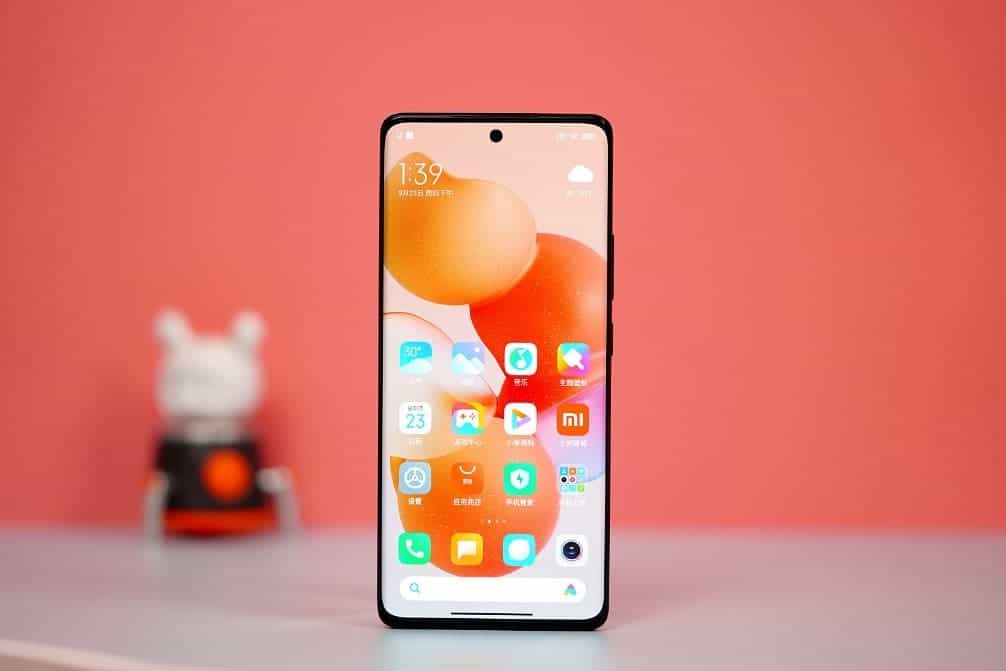
Gizchina News of the week
Key front camera specifications:
- 32MP autofocus front camera with f/2.4 aperture
- HDR
- AF, dual soft LED flash
- Panorama
- 1080p@30fps
Xiaomi Civi succinct preview
The Xiaomi Civi comes with a 6.55 inch AMOLED screen display that supports 1080 × 2400 pixels resolution and a 120Hz refresh rate. Under the hood, this smartphone uses the Snapdragon 778G 6nm chip with Adreno 642L GPU. Furthermore, it supports 8GB/12GB LPDDR4X of RAM and 256GB of internal storage. On the rear, it has a triple camera setup which includes a 64MP main sensor, 8MP 120° ultra-wide sensor, and 2MP macro camera. The battery size is only 4500 mAh and it supports 55W fast.
5. Google Pixel 6
When it comes to cameras, Google is one of the best in the industry. It will be strange to have a new Pixel smartphone that does not have a decent camera. However, Google is one of those companies that prove that a higher pixel does not mean a better camera. The Google Pixel 6 series comes with the highest-ever pixel camera on a Pixel smartphone. This smartphone uses an 11.1MP camera, this is not a mistake, it actually uses an 11.1MP camera. Nevertheless, the exposure of this camera is pretty decent
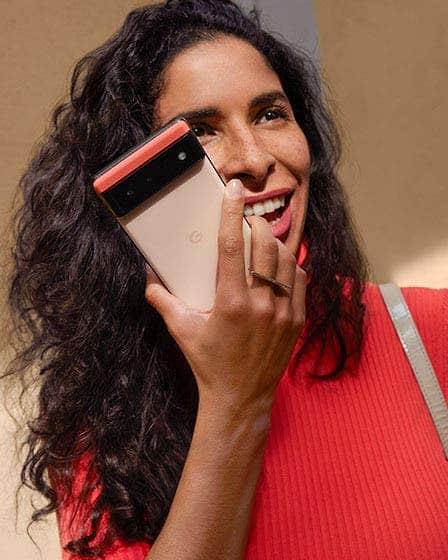
Key front camera specifications:
- 11.1MP 1/4.0″ sensor
- f/2.2-aperture lens with 20 mm-equivalent focal length
- Fixed focus
- Display-flash
- 4K@30fps, 1080p@30/60fps
With only 11.1MP upfront, this smartphone has the smallest pixel size on this list. However, its software optimization is second to none. This smartphone is supposed to be Google’s flagship but the company had to cut some corners to reduce the cost. This of course affected the overall performance of the camera of this device. Overall, there is not much to complain about regarding the front camera of this device. The colour output, white balance, focus, and other features are quite decent. More importantly, is that this camera puts the noise under perfect control even in low-light environments.
Google Pixel 6 succinct spec preview
This smartphone comes with a 6.4-inch AMOLED screen that supports 1080 x 2400 pixels as well as a 90Hz refresh rate. This device offers 8GB of RAM and 128GB/256GB of internal storage. Furthermore, this device comes with a decent 4,614 mAh battery that supports 30W fast charging, 21W wireless charging as well as reverse wireless charging. Under the hood, this device uses a Google Tensor Chip which is built with a 5nm manufacturing process.
6. Google Pixel 6 Pro
Just like the iPhone 13 Pro/Max, the Google Pixel 6/6 Pro comes with basically the same selfie camera. Thus, whether it is the Pixel 6 or the Pixel 6 Pro, you’ve got a decent selfie smartphone on your hands. Google adds a couple of camera features that further optimizes the performance of the camera.
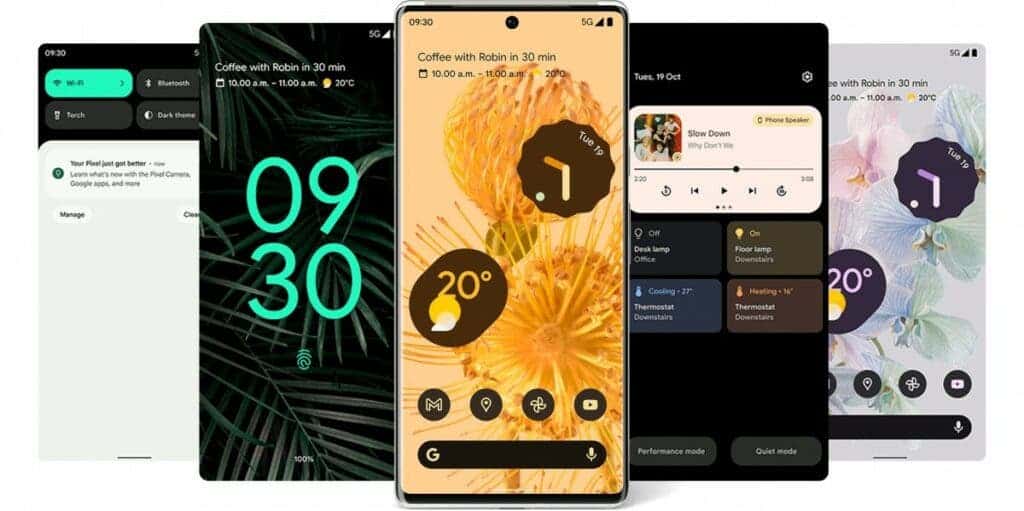
Key front camera specifications:
- 11.1MP 1/4.0″ sensor,
- 1.22 μm pixel width
- f/2.2-aperture lens with 20 mm-equivalent focal length
- Fixed focus
- Display-flash
- 4K@30fps, 1080p@30/60fps
- 94° ultrawide field of view
Google Pixel Pro succinct spec preview
The Google Pixel 6 Pro comes with the 5nm Tensor SoC. The Google Tensor chip is Google’s self-developed processor and the Pixel 6 series launches this chip. Under the hood, the Pixel 6 Pro comes with 12GB of RAM and 128GB/256GB/512GB of UFS 3.1 internal storage. Furthermore, this device uses a 6.71-inch LTPO AMOLED display that supports 1440 x 3120 pixel resolution as well as a 120Hz refresh rate. This device also comes with a huge 5000 mAh battery that supports a 30W fast charge, 23W wireless charging, and reverse wireless charging. The battery department is one of the selling points of this smartphone.
7. Honor 50
The Honor Magic3 series is the first post-Huawei flagship from the Honor sub-brand. However, the Magic3 design and development were already done before the sale of the company. Thus, the Honor 50 is considered as Honor’s first true flagship. This device is an “all-round” flagship and it also comes with a decent front camera. This is why it has a spot on our smartphones for selfies list. Looking at the specs, this device comes with a decent 32MP front camera that has an aperture of f/2.2 and an ultrawide field of view. Although this device lacks 4K video, it supports 1080p@30fps, a video capacity that most of the devices on this list uses.
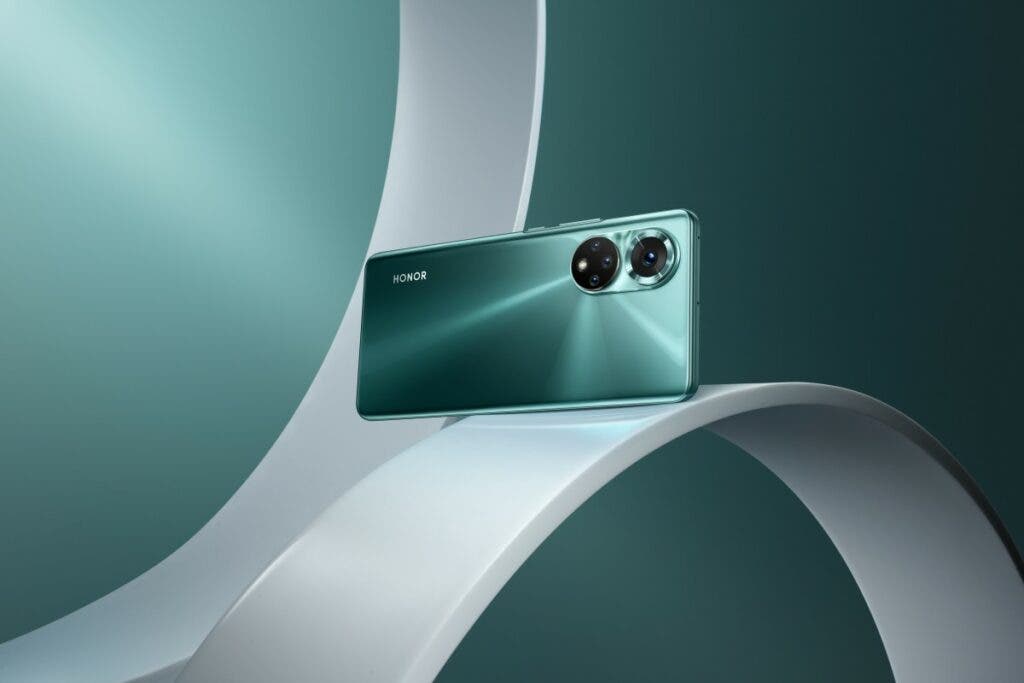
Key front camera specifications:
- 32MP sensor, 1/3.14″
- f/2.2-aperture lens
- 1080p@30fps
Honor 50 succinct preview
The Honor 50 comes with a 6.57 OLED display that supports 1080 x 2340 pixel resolution and a 120Hz refresh rate. Unlike the Honor Magic3 Pro, the Honor 50 comes with Google Mobile Services. In fact, this is the first Honor smartphone to come with GMS after Huawei’s ban by the U.S. Under the hood, this smartphone uses the Snapdragon 778G 5G SoC which is a 6 nm chip. This device uses 6GB/8GB/12GB of RAM and 128GB/256GB of internal storage. On the rear, it has a quad-camera setup. This smartphone comes with a massive 108MP main camera as well as an 8MP ultrawide angle camera. This device also has a 2MP macro camera and a 2MP depth sensor. The battery size is only 4300 mAh and it supports 66W fast charging. On the software end, this device comes with Magic UI 4.2 (Android 11) out-of-the-box.
8. Lenovo Legion 2 Pro
The Lenovo Legion 2 Pro is the first Lenovo device to make our top 10 selfie column since inception. However, there is a good reason why this device makes this list. This device comes with a motorized pop-up camera. However, unlike most pop-up cameras, you have to hold the smartphone horizontally to use the selfie camera. If you hold the device normally, the pop-up camera will emerge from the side of the device. The Lenovo Legion 2 Pro comes with a 44MP 1/2.65-inch sensor and a 24mm-equivalent lens with f/2.0 aperture.
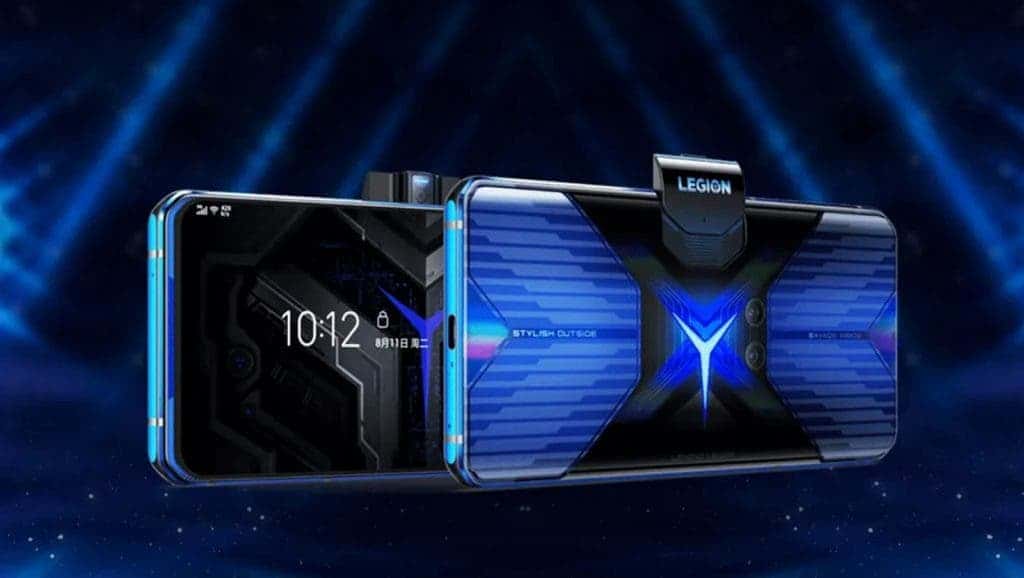
Key front camera specifications:
- Motorized pop-up camera
- 44MP 1/2.65-inch sensor with 1.0µm pixels
- 24mm-equivalent f/2.0-aperture autofocus lens
- AF
- HDR
- 4K@30/60fps, 1080p@30/60/120fps
Although this smartphone is designed for gamers, it comes with a decent front camera. Although, if you are not a gamer, you will be leaving a lot of features of this device desolate. Thus, it will be strange to get a gaming smartphone for selfie purposes. However, if you love smartphones with strange designs as well as selfies, then the Lenovo Legion 2 Pro may be your best bet.
This smartphone comes with top-notch focus with no instabilities. At close and medium-range, the capture of users’ faces is very sharp. At longer distances, the faces are sharp, however, there is some noise in the background. Despite the loss of background details from a longer range, the performance of this device’s front camera is still acceptable.
In addition to the top performance of the front camera for images, the video performance is also excellent. The 4K capacity of this smartphone is a selling point. Not many smartphones have selfie cameras that support 4K. It has top exposures, accurate autofocus, effective stabilization as well as pleasant colours. Even in low light conditions, the 4K front camera is not entirely the best but it’s top quality.
Lenovo Legion 2 Pro succinct spec preview
This smartphone comes with a 6.92 inch AMOLED display that supports a resolution of 1080 x 2460 (~388 PPI density). Under the hood, we have a Qualcomm Snapdragon 888 (5nm) coupled with up to 8GB/12GB/16GB/18GB of RAM and 128GB/256GB/512GB of internal storage. On the rear, it uses a dual-camera setup. This smartphone comes with a 64MP main camera as well as a 16MP ultrawide angle camera. To keep its lights on, this device uses a 5500 mAh battery that supports 65W (single USB-C port) / 90W (dual USB-C port) fast charging.
9. TCL 20 Pro 5G
If there is any smartphone on this list that is not so popular, it is the TCL 20 Pro 5G. Back in the day, TCL used to be a very popular name. However, it has not been on top of its game in recent years. Nevertheless, the TCL 20 Pro 5G comes with some pretty decent features that give it a place on our top 10 list. Surprisingly, TCL was able to pull some tricks with its software optimization. This smartphone takes pretty decent selfies with its 32MP front camera.
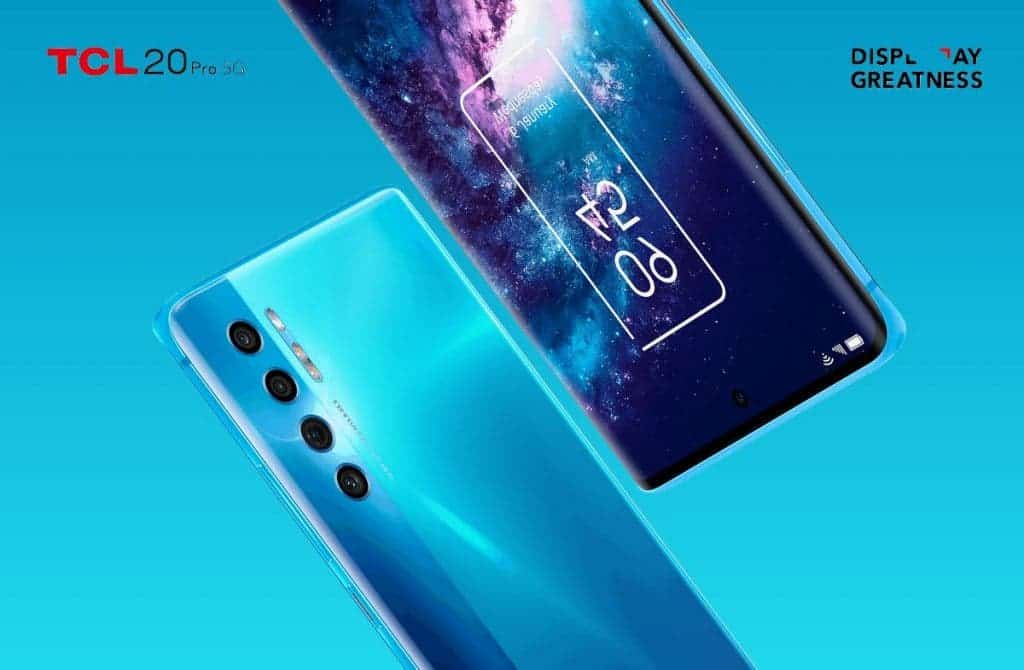
Key front camera specifications:
- Single front camera
- 32 MP, f/2.5, 26mm (wide), 1/2.8″, 0.8µm, PDAF
- Auto-HDR
- 4K@30fps, 1080p@30/60fps
While the image comes with good exposure and low noise, it also supports night mode and stabilization. However, the most attractive aspect of the front camera of this smartphone is its video capacity. On the video front, the TCL 20 Pro 5G can record 4K video up to 30 fps and the sensor can also capture 1080pvideo at up to 60 fps. While the latter is pretty common and is found in many selfie cameras, the former is not.
TCL 20 Pro 5G succinct spec preview
This device comes with a Qualcomm Snapdragon 750G 5G SoC and it is a mid-range smartphone. It uses a 6.67-inch AMOLED display that supports Nxtvision 2 and 1080 x 2400 pixel resolution. In addition, it has 6GB of RAM and 256GB of internal storage. The internal storage is expandable using an SD Card. On the rear, it has a quad-camera setup with a 48MP main sensor that also supports 4K videos. It also comes with a 16MP ultrawide angle sensor, 2MP macro, and 2MP depth sensors. Furthermore, this device comes with a 4,500 mAh battery that supports an 18W fast charge, and 15W wireless charging.
Huawei P50 Pro
A few months ago, Chinese manufacturing giant, Huawei officially released the Huawei P50 series. The Pro model of this series, the Huawei P50 Pro, almost instantly climbed to the top of the selfie ranking on DxOMark. In fact, its rear camera is also the best smartphone camera on DxOMark ranking. We didn’t have to struggle with the decision to include this device as one of the top smartphones for selfies. This smartphone also made our top 10 smartphones for selfies in August. However, continues to have a spot here due to its blistering performance.
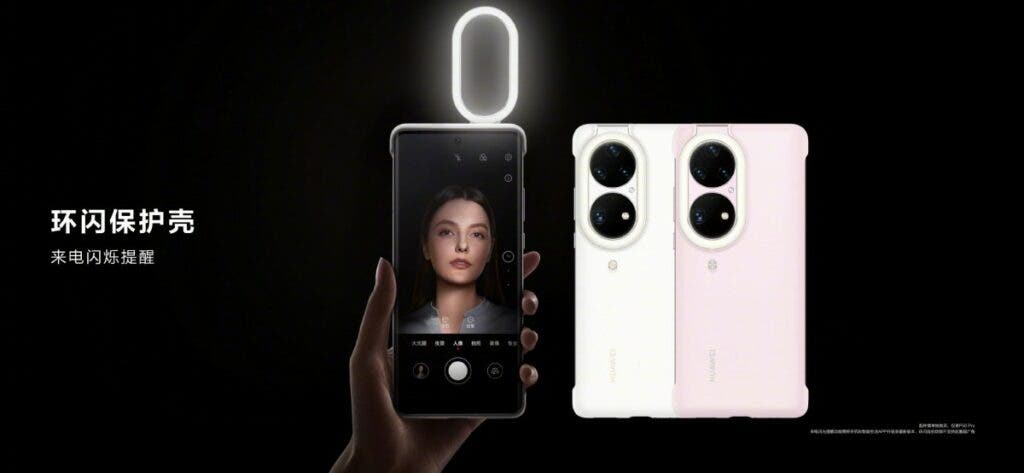
The Huawei P50 Pro front camera specification is not very different from last year’s Mate 40 Pro. This device comes with a 13 MP Sony IMX688 sensor (f/2.4-aperture lens with an 18 mm-equivalent focal length). Although this sensor is just 13MP, it performs better than many 32MP front cameras in the market. The front camera optimizations from Huawei are also another beautiful aspect of this device.
Unlike the Huawei Mate 40 Pro, the Huawei P50 Pro front camera comes with phase-detection autofocus (PDAF) system. This makes this smartphone the first Huawei device to come with this technology. The Chinese manufacturer also uses Artificial Intelligence (AI) to optimize the image quality of the front camera.
For better videos, the Huawei P50 Pro comes with staggered HDR processing and improved EIS (electronic image stabilization). While the HDR improves the image quality in low-light conditions and the wider lenses stabilize the image effect, the EIS helps with cropping and blurred images.
Generally, the Huawei P50 Pro front camera has very good exposure in both photos and videos. It also comes with a wide dynamic range while the white balance is quite accurate. Nevertheless, in low-light environments, the details are not as good and some noise may appear. Occasionally, users may experience autofocus and inaccurate skin tone issues. The dynamic range also significantly reduces in low-light videos.
Key front camera specifications:
- 13 MP 1/2.8″ sensor with 1.22µm pixel size
- 18 mm-equivalent lens with f/2.4 aperture
- PDAF, EIS
- 4K video, 2160p/60 fps, (2160p/30 fps tested)
Huawei P50 Pro succinct specifications
This smartphone comes with a 6.6-inch OLED display that supports a resolution of 1228 x 2700 pixels (~450 PPI density). Under the hood, we have a Kirin 9000 5nm chip that supports 5G. However, it is important to note that the Huawei P50 Pro can only use this device with 4G network. In addition to the Kirin 9000, some models of this device use the Snapdragon 888 4G SoC. This chip is also a 5nm processor that supports only 4G. This means that the Huawei P50 Pro does not support 5G connectivity.
In addition to the processors, this flagship smartphone also has up to 12GB of RAM and 128GB/256GB/512GB of internal storage. On the rear, it uses a quad camera setup. It has a 50MP main camera, a 13MP (ultrawide), 64MP periscope telephoto, and a 40MP black and white sensor. To keep its lights on, this device uses a 4360 mAh battery that supports 66W fast charging, and 50W wireless fast charging. This flagship smartphone is the first device to come with HarmonyOS 2 out-of-the-box. Of course, it does not support Google Mobile Services.
Conclusion
This is our top 10 smartphones for selfies for the month of October. This list is also our fifth edition of for the best smartphones for selfies. However, it is important to note that these devices are not listed in any particular order. Interestingly, this October smartphones for selfies edition has more brands than any other edition. Your favorite smartphone may be missing from this list. Worry not, we have four previous editions which will most likely have your favorite device. If there is any smartphone that you think should make the list, let us know in the comment below.

